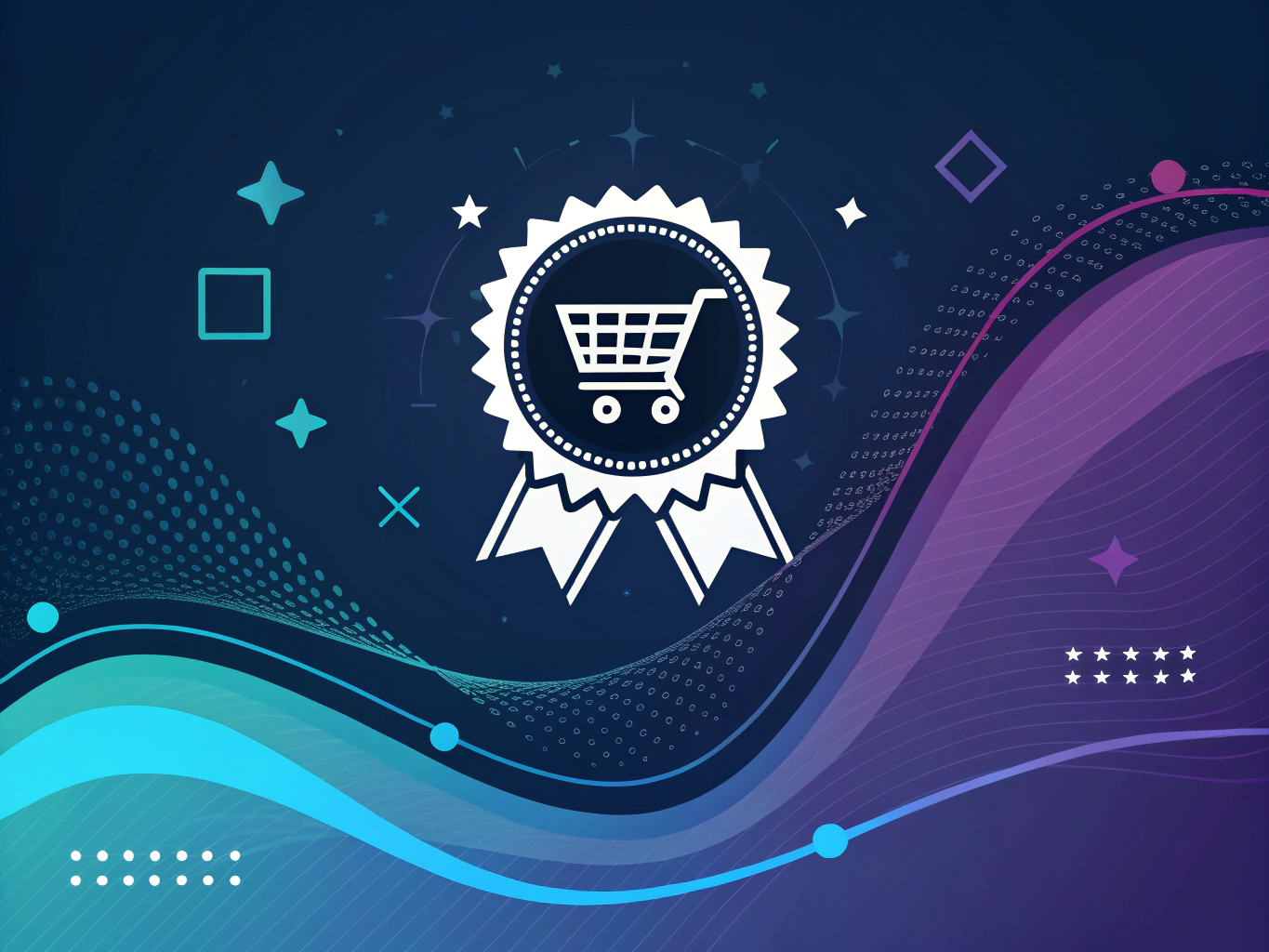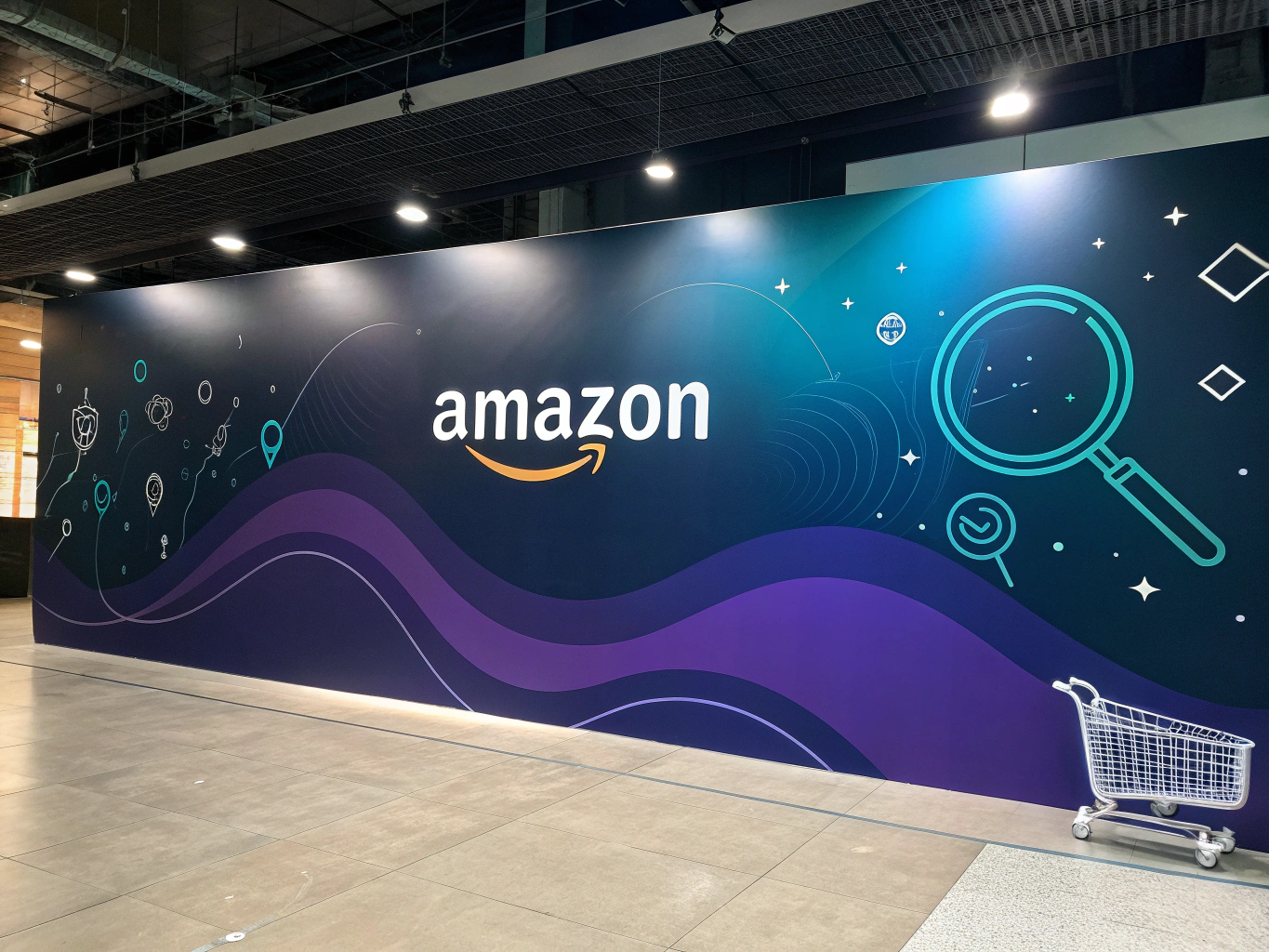Ever wonder why some products on Amazon seem to get all the spotlight while others fade into the digital abyss? I’ve spent years analyzing Amazon’s algorithms, and there’s one badge that keeps fascinating me: Amazon’s Choice. It’s like that coveted “Employee of the Month” parking spot, except it’s for products, not people. If you’re curious about how this compares to other badges, check out what Amazon Choice means.

The funny thing about Amazon’s Choice is that it started as a simple solution for Alexa users who were tired of lengthy product descriptions. “Alexa, buy batteries” needed to mean something specific, not trigger a 20-minute monologue about different battery brands. But what began as a voice shopping convenience has evolved into one of the most influential badges in ecommerce history.
Let’s cut through the mystery and break down what Amazon’s Choice really means, why it matters, and how it’s reshaping the way we shop online. And no, it’s not just another marketing gimmick – though I’ll admit, Amazon’s been pretty clever about the whole thing. Learn more with our guide to selling on Amazon.
If you’re interested in voice commerce, see how it compares with Amazon Hub Counter services.
Understanding Amazon’s Choice Badge: Origins and Evolution
Back in 2015, when voice shopping was still finding its feet (remember those awkward early days of talking to Alexa?), Amazon faced a unique challenge. Voice commerce needed to be quick and decisive – no one wanted to listen to their Echo device recite product specifications for hours. The solution? Amazon’s Choice was born.
What started as a voice shopping feature quickly became a powerful trust signal across Amazon’s entire marketplace. Think of it as Amazon’s way of saying, “If we had to pick one product in this category to recommend to our best friend, this would be it.” And let’s be real – when a trillion-dollar company points at something and says “this one,” people tend to notice.
The numbers don’t lie. Products with the Amazon’s Choice badge typically see a 200-300% increase in sales within the first week of receiving the designation. That’s not just a bump – it’s a rocket launch for product visibility. Consider the impact of Amazon arbitrage on visibility.
How Amazon’s Choice Actually Works

Core Selection Criteria: The Not-So-Secret Recipe
You know how your mom has that perfect recipe that she swears isn’t complicated but somehow nobody can replicate? Amazon’s Choice algorithm is kind of like that. We know the main ingredients, but the exact measurements? That’s Amazon’s secret sauce.
Here’s what we do know about the selection criteria:
Customer ratings and reviews aren’t just numbers – they’re the heartbeat of the badge. Products typically need to maintain at least a 4-star average rating, but it’s not just about the stars. Amazon’s algorithm is sophisticated enough to analyze review quality, looking for authentic, detailed feedback rather than just “Great product!” one-liners.
Price competitiveness is another major factor, but here’s where it gets interesting: Amazon isn’t necessarily looking for the cheapest option. They’re looking for the best value proposition. It’s like shopping for a car – sometimes the mid-range model with all the right features makes more sense than the budget option or the luxury splurge. Compare this with reselling on Amazon.
Shipping speed and availability requirements are non-negotiable. If you can’t consistently deliver (literally), you’re not in the running. Prime eligibility is practically a prerequisite at this point. Think of it as Amazon’s version of “you must be this tall to ride this ride.”
The Algorithm Behind the Badge: A Dynamic Dance
Here’s something that might blow your mind: the Amazon’s Choice badge isn’t a permanent achievement. It’s more like a championship title that needs to be defended regularly. The algorithm continuously evaluates products in real-time, which means today’s badge holder could be tomorrow’s runner-up. This is similar to the dynamic between Helium 10 and Jungle Scout.
The selection process varies by region too. A product might be Amazon’s Choice in New York but not in California. Why? Because local availability, shipping speeds, and even regional buying patterns all play a role. It’s like how a hot coffee might be the drink of choice in Seattle, but iced tea rules in Atlanta.
Category-specific considerations add another layer of complexity. The criteria for earning the badge in electronics might be completely different from what it takes in home goods. It’s not one-size-fits-all – it’s more like one-algorithm-adapts-to-all.
Benefits and Impact of Amazon’s Choice

For Shoppers: The Trust Factor
Let’s talk about decision fatigue – it’s real, and it’s exhausting. When you’re staring at 200 different options for something as simple as a phone charger, your brain starts to feel like it’s running a marathon. This is where Amazon’s Choice comes in clutch. If you’re considering different platforms, see our Shopify vs Wix vs Squarespace comparison.
The badge serves as a cognitive shortcut. It’s like having a really knowledgeable friend who’s already done all the research for you. And while it’s not perfect (what is?), data shows that products with the Amazon’s Choice badge have a 25% lower return rate than non-badge products in the same category.
The time-saving aspect can’t be overstated. In an era where we’re all juggling a million things, having a trusted recommendation can literally save hours of comparison shopping. Plus, since these products are typically Prime-eligible, you’re not just saving time on research – you’re getting your stuff faster too.
For Sellers: The Golden Ticket
For sellers, getting the Amazon’s Choice badge is like finding a golden ticket to Willy Wonka’s factory – except instead of chocolate, you’re getting visibility, credibility, and a serious boost in sales. Let’s look at some numbers that’ll make your head spin: products with the badge see an average conversion rate increase of 200-350%.
But it’s not just about immediate sales. The badge creates a positive feedback loop. Higher visibility leads to more sales, which leads to more reviews, which helps maintain the badge, which keeps the visibility high… you get the picture. It’s like compound interest for your product listing.
Brand credibility gets a massive boost too. When you’re competing in a sea of similar products, that little black badge can be the difference between being seen as a market leader versus just another option. I’ve seen brands leverage their Amazon’s Choice status in their overall marketing strategy, using it as social proof across other platforms.
The competitive advantage is particularly noticeable in voice shopping. Remember, Alexa defaults to Amazon’s Choice products when specific brands aren’t mentioned. In a world where voice commerce is growing exponentially, this is like having prime real estate in a booming neighborhood.
Common Misconceptions About Amazon’s Choice

Debunking Popular Myths
Okay, time for some myth-busting. You know how everyone has that one uncle who insists he knows exactly how Amazon works? Yeah, he’s probably wrong about a few things.
First up: “Amazon’s Choice is just paid placement.” Nope. While Amazon does have sponsored product placements, the Choice badge isn’t one of them. It’s like assuming the popular kid in school paid for their popularity – sometimes things are actually based on merit (shocking, I know).
Another common myth is that Amazon manually selects these products. Given that Amazon lists literally millions of products, having humans pick Choice items would be like trying to count grains of sand on a beach. It’s all algorithmic, folks.
Important Clarifications
The selection process is dynamic and automated, which means your product’s status can change faster than a New York minute. The algorithm continuously evaluates products against their competitors and against Amazon’s standards.
Here’s something that surprises many sellers: multiple products in the same category can receive the badge. It’s not a winner-take-all situation. Think of it more like a honor roll than a valedictorian selection.
And contrary to popular belief, maintaining the badge requires consistent performance. It’s like keeping a plant alive – you need to tend to it regularly, or it’ll wither away. This means maintaining inventory levels, competitive pricing, and customer satisfaction metrics.
How to Optimize Products for Amazon’s Choice
Let’s get tactical. Because while understanding Amazon’s Choice is great, what really matters is positioning your products to earn that coveted badge. Think of it like training for the Olympics – you need the right combination of preparation, execution, and consistent performance.
Strategic Approaches
First things first: pricing optimization. I’ve seen too many sellers try to race to the bottom here, but that’s like trying to win a marathon by sprinting the first mile. Instead, focus on maintaining competitive prices while preserving your margins. Use automated repricing tools if you can – they’re like having a 24/7 pricing analyst on your team.
Inventory management is another critical piece of the puzzle. Stock-outs are the kiss of death for Amazon’s Choice status. You need to maintain at least 30 days of inventory at all times. I like to think of it as keeping enough fuel in your rocket ship – you don’t want to run out mid-flight.
When it comes to review generation, authenticity is key. Don’t fall into the trap of buying reviews (seriously, don’t). Instead, focus on follow-up sequences that naturally encourage happy customers to leave feedback. It’s like building a relationship – you need to nurture it.
Technical Requirements
Your listing optimization needs to be spot-on. This means clear, benefit-focused titles that include your main keywords without keyword stuffing. Think of it as writing a movie trailer – you want to grab attention while accurately representing what’s inside.
Images matter more than ever. Amazon’s Choice products typically have at least 6 high-quality images that show the product from every angle. Include lifestyle shots, size comparisons, and infographics. Remember, we’re living in a TikTok world – visual appeal is everything.
Product descriptions should read like they were written by a human, for humans. Break up text with bullet points, use natural language, and focus on benefits over features. And please, for the love of all things ecommerce, proofread everything twice.
Advanced Insights and Expert Analysis

Time to dive into the data that really matters. Because while gut feelings are great, numbers tell the real story of what’s happening with Amazon’s Choice products.
Market Impact Studies
The conversion rate boost from earning Amazon’s Choice is significant – we’re talking an average increase of 25-35% in most categories. Pairing this with effective Amazon ad types, such as Sponsored Products or Sponsored Brands, can amplify your visibility and sales even further. But here’s what’s fascinating: this boost isn’t uniform across all product types. Tech gadgets see bigger jumps than household essentials, probably because shoppers rely more heavily on Amazon’s recommendation for complex purchases.
Customer behavior patterns show that Amazon’s Choice products are particularly powerful for mobile shoppers, who convert at nearly 40% higher rates when seeing the badge. This makes sense – when you’re thumbing through products on your phone, you’re looking for quick trust signals.
Competition effects are interesting too. When a product gains the Amazon’s Choice badge, competing products typically see a 15-20% drop in conversion rates. It’s like a zero-sum game where the winner takes a bigger slice of the pie.
Future Trends and Predictions
AI integration is going to reshape how Amazon’s Choice works. We’re already seeing early signs that Amazon is using machine learning to make more nuanced badge assignments based on customer behavior patterns. This isn’t just about sales numbers anymore – it’s about predicting what customers will love.
Voice commerce is another game-changer. As more people shop through Alexa, Amazon’s Choice becomes even more crucial. When someone says “Alexa, buy dog food,” guess which product gets recommended? Yep, usually the Amazon’s Choice option.
Mobile shopping implications are huge too. With over 70% of Amazon browsing happening on phones, the badge’s visual impact becomes even more important. Expect to see Amazon experimenting with new ways to highlight Choice products in mobile search results.
Practical Tips for Shoppers
Let’s flip to the other side of the coin and talk about what this means if you’re a shopper rather than a seller. Because while Amazon’s Choice can be helpful, it shouldn’t be your only decision-making factor.
Making Informed Decisions
Always verify the badge yourself – don’t trust screenshots or old listings. Amazon’s Choice status can change daily, and some sellers try to fake it. It’s like checking the expiration date on milk – just make it a habit.
Compare alternatives, even when you see the badge. Sometimes the Amazon’s Choice product might not be the best fit for your specific needs. I always recommend checking at least 2-3 other options in the same category.
Look at price history using tools like CamelCamelCamel. Sometimes products earn Amazon’s Choice right before a price increase. Don’t fall for that old trick – it’s like buying a car without checking its service history.
Smart Shopping Strategies
Different categories need different approaches. For tech products, prioritize recent reviews since older ones might not reflect current versions. For consumables, focus more on consistency and shipping speed.
Seasonal variations matter too. Amazon’s Choice badges often shift during major shopping events like Prime Day or Black Friday. What’s recommended in July might not be the best deal in November.
Finally, remember that Amazon’s Choice isn’t infallible. It’s an algorithmic recommendation, not a personal shopper. Use it as one data point among many when making purchasing decisions.
Final Thoughts on Amazon’s Choice
After diving deep into what Amazon’s Choice means, how it works, and its impact on both sellers and shoppers, one thing becomes clear: it’s a powerful tool, but not a magic wand. Think of it like a really good GPS system – it’ll generally point you in the right direction, but you still need to keep your eyes on the road.
For sellers, earning and maintaining the badge should be part of your strategy, not your entire strategy. If you ever decide to sell Amazon business, having an Amazon’s Choice badge can significantly increase your business’s valuation and appeal to potential buyers. Focus on building a genuinely great product and customer experience first. The badge will follow naturally if you’re doing things right.
For shoppers, use Amazon’s Choice as a starting point, not an endpoint. It’s a helpful filter in a sea of options, but your specific needs should always guide your final decision.
The future of Amazon’s Choice will likely become even more sophisticated as AI and machine learning continue to evolve. If you’re looking to become an Amazon influencer, understanding how to leverage Amazon’s Choice products in your content can help you build trust and authority with your audience. But at its core, it will always serve the same purpose: helping shoppers make faster, more confident buying decisions in an increasingly complex marketplace.
Whether you’re a seller aiming for the badge or a shopper using it to guide purchases, remember that Amazon’s Choice is just one part of a larger ecommerce ecosystem. Use it wisely, but don’t let it be your only guiding star in the vast universe of online shopping.
👉👉 Create Photos, Videos & Optimized Content in minutes 👈👈
Related Articles:
- What Does Amazon Choice Mean? A Simple Guide [2024]
- HEIC vs JPEG: Optimizing Image Quality for Better Online Sales
- Helium 10 vs Jungle Scout: Which FBA Tool Wins in 2024
Frequently Asked Questions
What does Amazon choice mean?
Amazon Choice is a label given to products that are highly rated, well-priced, and available to ship immediately. It serves as a recommendation to help customers quickly find high-quality items that meet their needs.
What does Amazon choice mean on a product?
When a product is labeled as Amazon Choice, it means that Amazon has identified it as a top choice based on customer ratings, pricing, and shipping speed. This badge helps customers easily find products that have been vetted for quality and value.
What are the benefits of Amazon Choice?
The benefits of Amazon Choice include providing customers with a quick and reliable way to find highly-rated and competitively-priced products. It enhances the shopping experience by reducing the time and effort needed to evaluate product options.
How do you qualify for Amazon Choice?
To qualify for Amazon Choice, a product must have a strong sales history, receive high customer ratings, and be competitively priced. Additionally, it should be available for immediate shipping, often through Amazon Prime, to ensure quick delivery to customers.
About the Author
Vijay Jacob is the founder and chief contributing writer for ProductScope AI focused on storytelling in AI and tech. You can follow him on X and LinkedIn, and ProductScope AI on X and on LinkedIn.
We’re also building a powerful AI Studio for Brands & Creators to sell smarter and faster with AI. With PS Studio you can generate AI Images, AI Videos, Chat and Automate repeat writing with AI Agents that can produce content in your voice and tone all in one place. If you sell on Amazon you can even optimize your Amazon Product Listings or get unique customer insights with PS Optimize.
🎁 Limited time Bonus: I put together an exclusive welcome gift called the “Formula,” which includes all of my free checklists (from SEO to Image Design to content creation at scale), including the top AI agents, and ways to scale your brand & content strategy today. Sign up free to get 200 PS Studio credits on us, and as a bonus, you will receive the “formula” via email as a thank you for your time.
